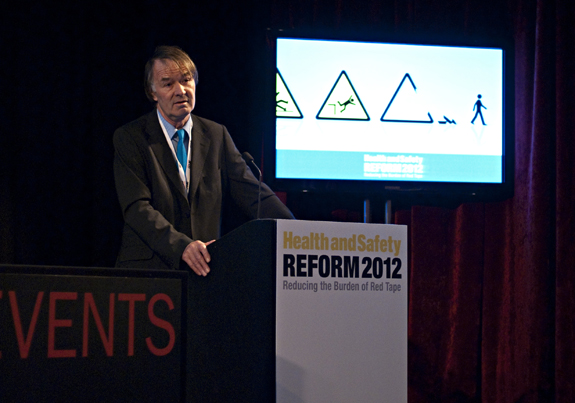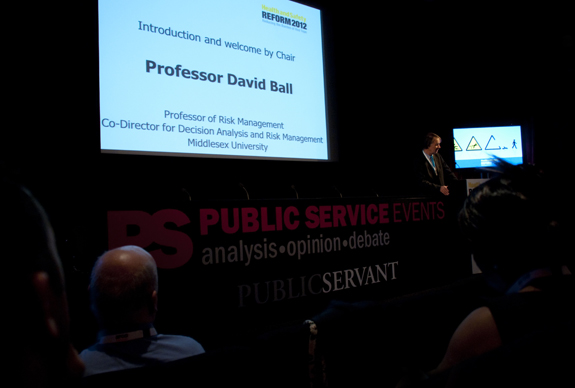Public Service Events ran a one day conference entitled ‘Health and Safety Reform – reducing the burden of red tape,’ sponsored by ARCO at the Barbican on 26 April 2012. The conference was chaired by David Ball and had an impressive line-up of speakers including Andrew Miller MP (member of Löfstedt review panel), Judith Hackitt (Chair of HSE), Luise Vassie (Policy Director, IOSH), Thomas Martin (joint-MD, ARCO) and Lynda Armstrong (Chair of Trustees, BSC). In the afternoon session panel members Stephen Williams (Director of Operation Strategy and 2012 Olympic Games, HSE), Roger Bibbings (RoSPA) and Gerard Forlin QC (Cornerstone Barristers) led the debate.
Messages to emerge included strong support for the Löfstedt review findings, notably that the underlying legislation was sound but that its interpretation was sometimes problematic and could depart from good sense and proportionality. In the words of Andrew Miller, the regime was overly complex with too much emphasis on paperwork. What was to be done? HSE’s contribution to the ambitious reform programme recommended by the Löfsted review included a comprehensive review of guidance with the aim of simplification while maintaining standards. In addition the ‘Myth Buster Panel’ had been set up, chaired by Judith Hackitt herself, and had already received its first batch of over twenty myths for scrutiny. One newly-emerged myth was summarily dealt with on the spot, namely someone’s proposal on safety grounds that holly trees be removed from school environments because of the (mild) toxicity of their berries. Judith’s response was an unreserved negative!
So the pervasive message was for a risk-based and proportionate approach to safety. But how to do this? As Luise Vassie described, what is needed is scientific evidence of the magnitude of risks in order to inform priorities, and secondly to check the effectiveness of H&S interventions.
From a personal perspective the overall drift of the conference was encouraging. The need to retain the concept of ‘reasonableness’ and ‘reasonable practicability,’ the need to prioritise on the ‘real’ risks (however defined), and the need to simplify perceived administrative demands including paperwork trails and tick-boxes which were more to do with secondary (liability) risk management than the primary focus which is safety and health. However, the task is not trivial. It requires a deeper understanding of many things which are seldom discussed or alluded to in the practicing safety world, including the nature and utility of evidence, the meaning of practicability, the behaviours of people, and the role of values in decision making. Many of these things have of course been intensively analysed in academia, but it has long been the case that the flow of academic thinking into the ‘real’ world has been erratic and sluggish.


